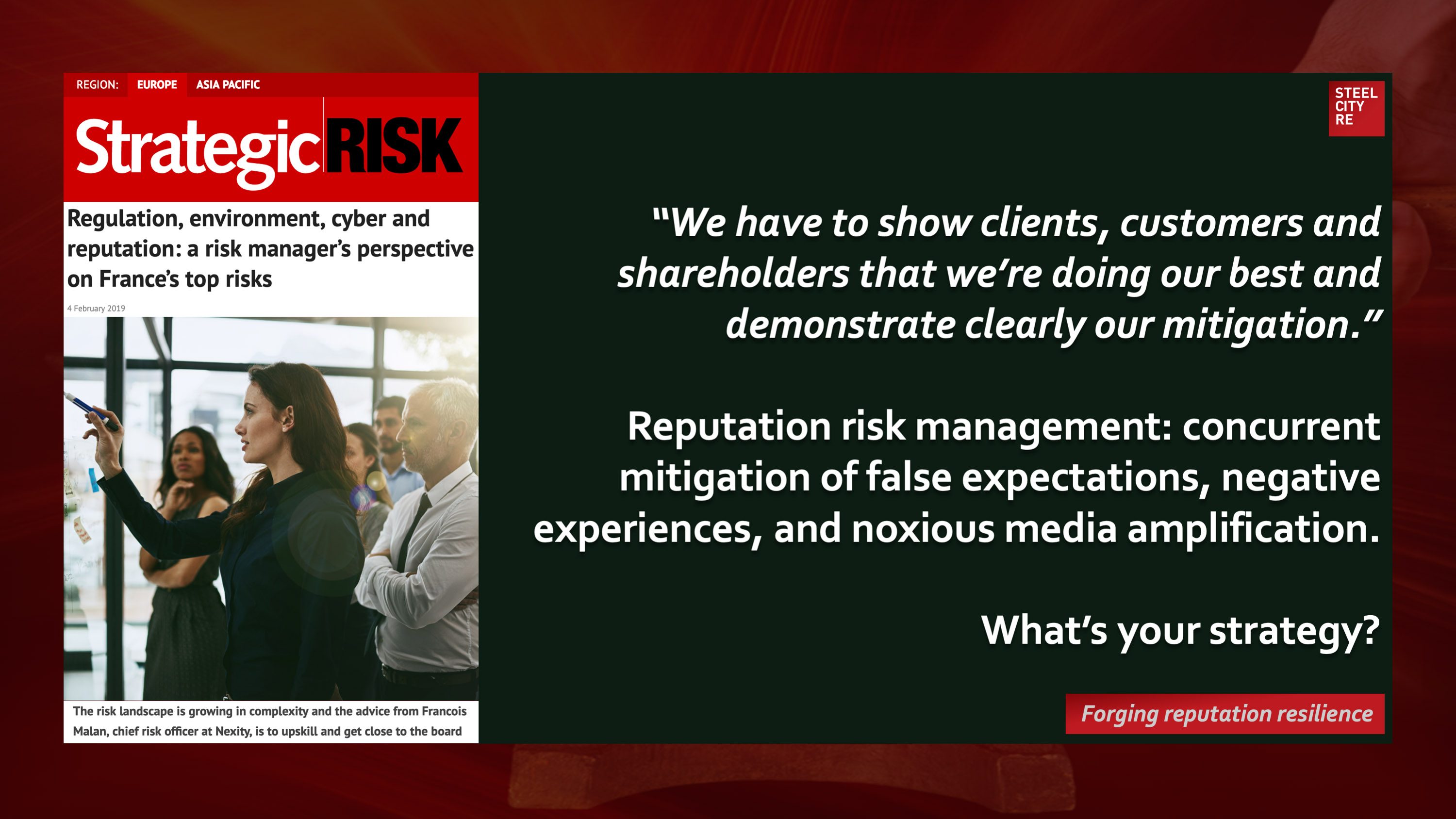The risk underpinning regulation, environment and cyber is reputation damage. The ramifications are huge if this is ill-managed. “It’s a big issue, especially companies with clients and customers worldwide, because when a risk arises it’s difficult afterwards to mitigate it…. Francois Malan, chief risk officer at Nexity, explains: “You need to work with other specialists, such as the IT security team, the safety team and the legal team. Risk management can’t work on its own, it’s more a project team solution than a risk manager one. You can lead and help people, but you need to work as a team.”
February 5, 2019
Strategic Risk
“We have to show clients, customers and shareholders that we’re doing our best and demonstrate clearly our mitigation.”
Reputation risk management begins with reputation risk governance.
Reputations are valuable strategic intangible assets. Threats to these assets⏤ enterprise reputation risks, often mislabeled “brand risks” ⏤ need to be managed, and management needs to be overseen through reputation risk governance lest reputational damage or reputational harm result in long-tailed go-forward losses in economic value and/or political power. Because these intangible risks arise from the interplay of stakeholder expectation, experiences, and media amplification, parametric insurances for intangible asset risks, for reputational value, for reputational harm, and for reputation assurance help mitigate risk by telling a simple, convincing and completely credible story of quality reputation governance to stakeholders. This story telling effect is the expressive power of insurance complementing insurance’s better known instrumental power of indemnification.
Risk management, risk financing in insurance captives, and risk transfer through reputation insurances comprise the constituent elements of a comprehensive solution. What’s your strategy?

